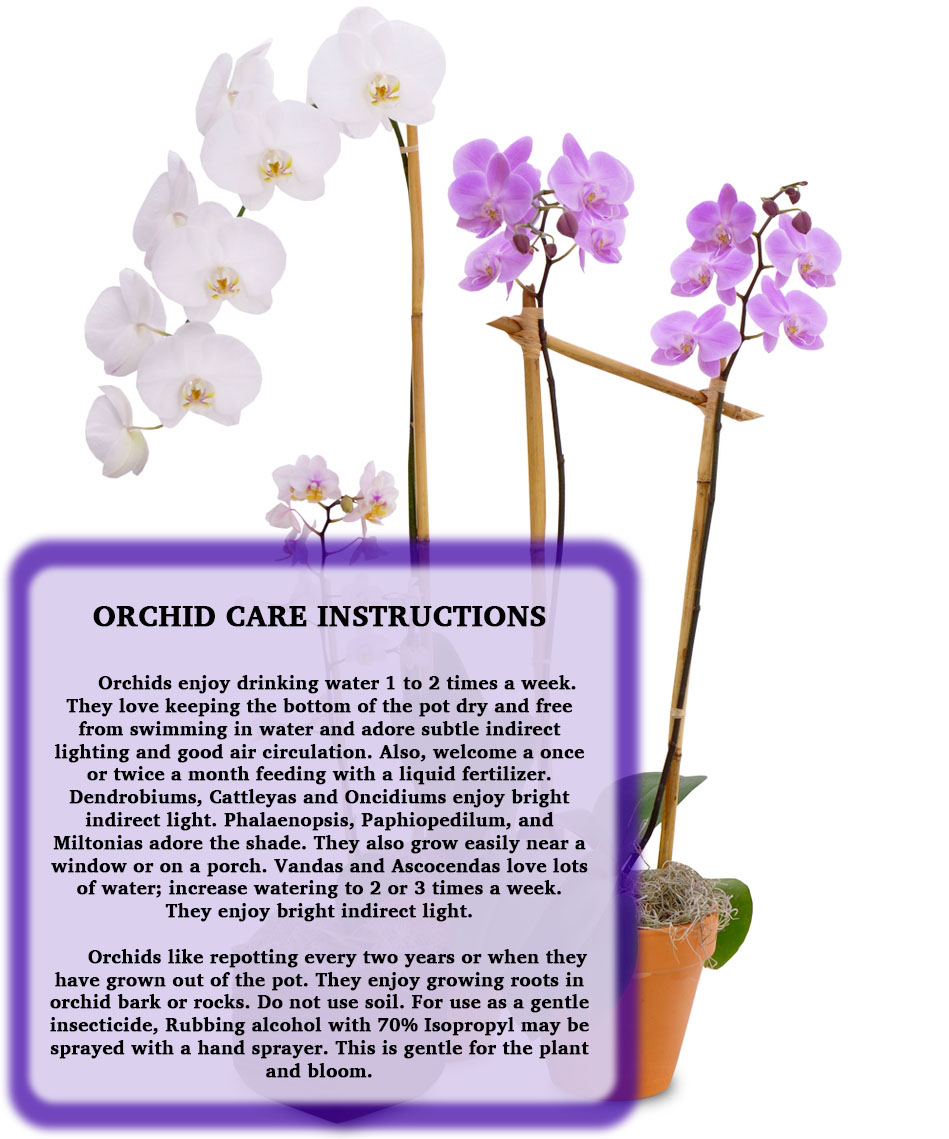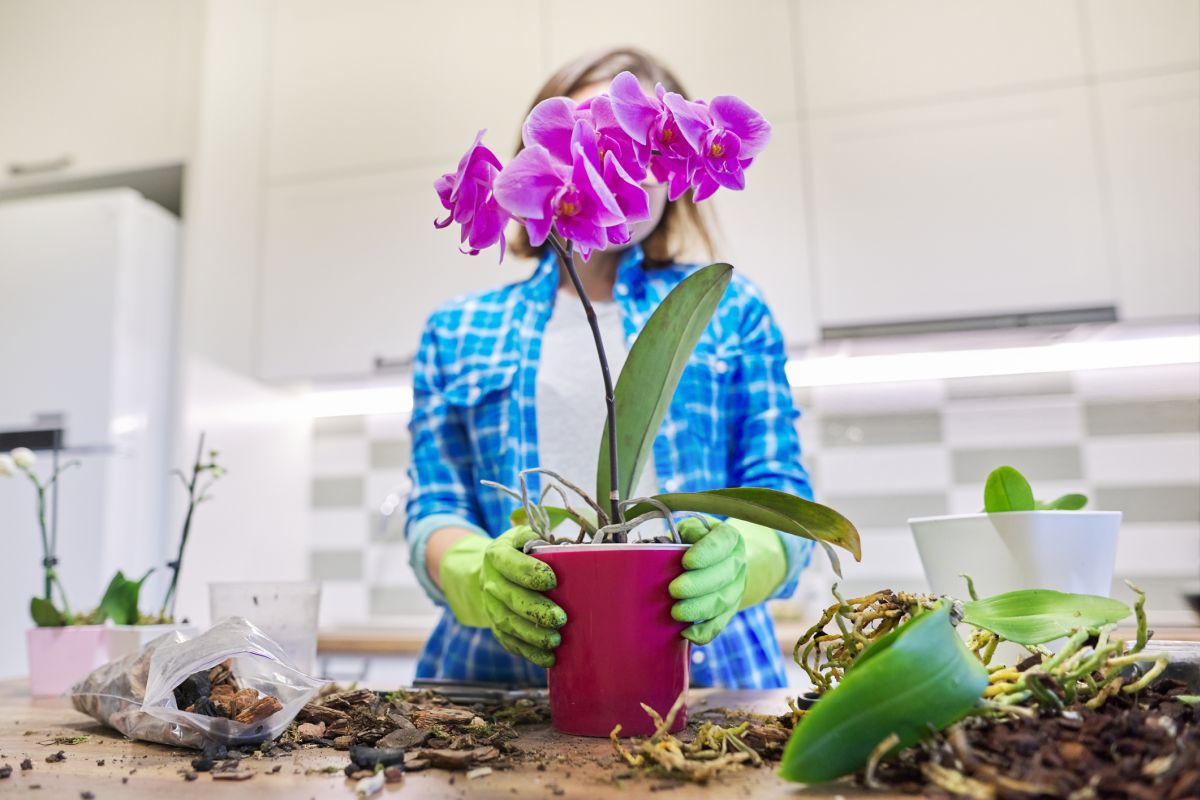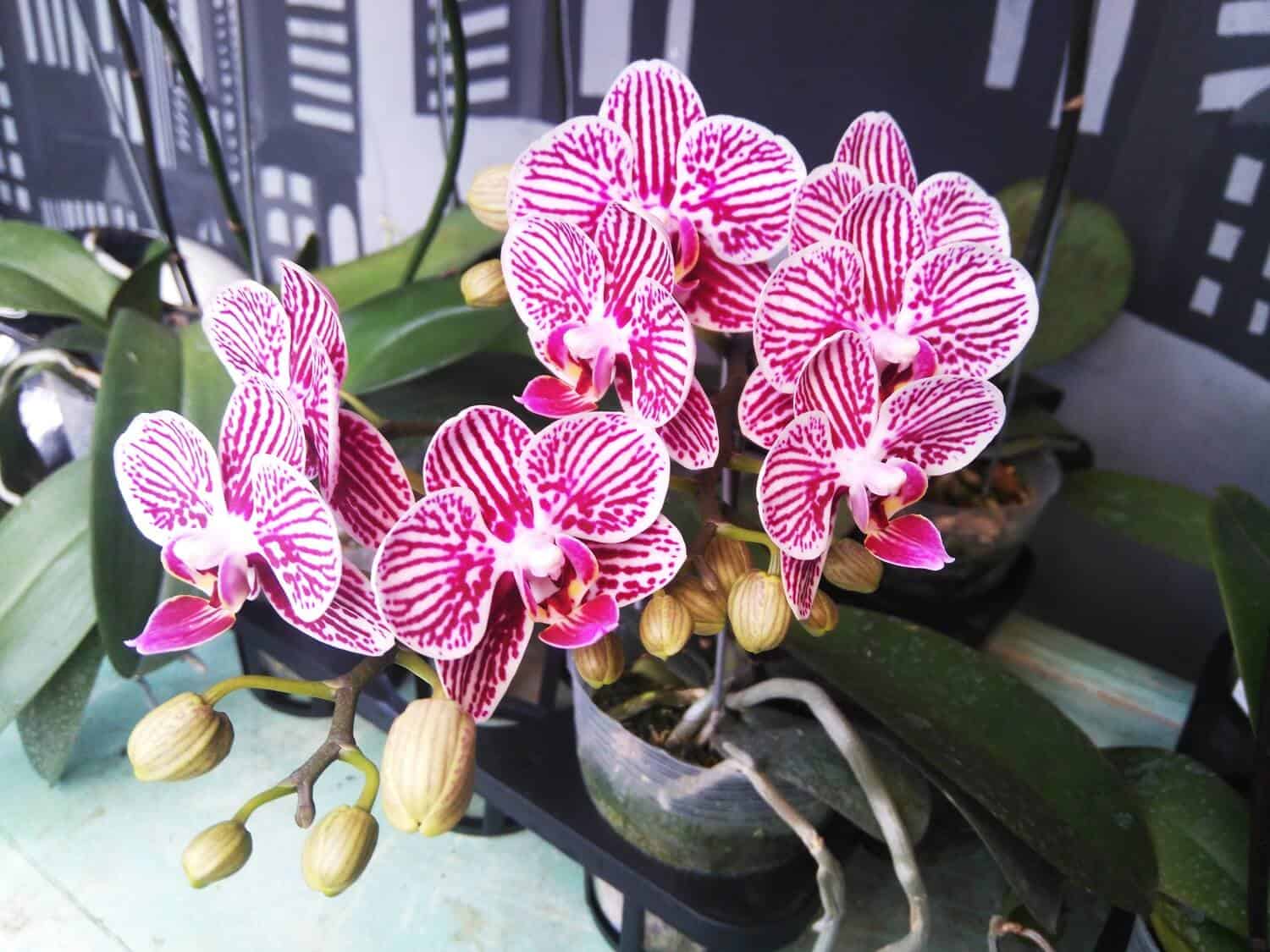Unlocking the Secrets of Orchid Maintenance
Orchids are one of the most diverse and exotic plant species, with over 30,000 known varieties worldwide. These beautiful plants have been a source of fascination for centuries, and their unique characteristics make them a popular choice for plant enthusiasts. However, orchids require specific care to thrive, and understanding their needs is crucial for successful cultivation. In this comprehensive guide, we will explore the art of orchid care, providing a step-by-step approach on how to take care of an orchid. From choosing the right variety to troubleshooting common issues, we will cover the essential topics to help you become an expert orchid caregiver.
Orchids are known for their delicate and intricate flowers, which can bloom for several months. However, their beauty is not just skin-deep. Orchids have adapted to thrive in a wide range of environments, from tropical rainforests to arid deserts. This adaptability makes them an excellent choice for indoor cultivation, but it also requires a deep understanding of their specific needs. By learning how to take care of an orchid, you can unlock the secrets of these fascinating plants and enjoy their beauty for years to come.
Whether you are a seasoned plant enthusiast or a beginner, this guide will provide you with the knowledge and skills necessary to care for your orchid. We will cover the essential topics, including lighting, temperature, watering, and fertilizing, as well as more advanced techniques, such as propagation and repotting. By the end of this article, you will have a comprehensive understanding of how to take care of an orchid and be well on your way to becoming an expert orchid caregiver.
Understanding Orchid Types: Choosing the Right Variety for You
With over 30,000 known varieties of orchids, selecting the right one can be a daunting task. However, understanding the different types of orchids can help you make an informed decision and ensure that you provide the best care for your plant. Phalaenopsis, Dendrobium, and Oncidium are three of the most popular types of orchids, each with its unique characteristics and requirements.
Phalaenopsis, also known as moth orchids, are one of the most common types of orchids. They are known for their delicate white, pink, or purple flowers and are relatively easy to care for. Phalaenopsis orchids prefer bright, indirect light and consistent temperatures between 65-75°F (18-24°C). They are also relatively low-maintenance when it comes to watering, requiring only once-a-week watering during the summer months.
Dendrobium orchids, on the other hand, are known for their long-lasting flowers and are often used in cut flower arrangements. They prefer bright, direct light and consistent temperatures between 65-75°F (18-24°C). Dendrobium orchids require more frequent watering than Phalaenopsis, with watering every 4-5 days during the summer months.
Oncidium orchids, also known as dancing ladies, are known for their small, delicate flowers and are relatively easy to care for. They prefer bright, indirect light and consistent temperatures between 65-75°F (18-24°C). Oncidium orchids require moderate watering, with watering every 7-10 days during the summer months.
When selecting an orchid variety, it’s essential to consider your lifestyle and experience level. If you’re new to orchid care, a Phalaenopsis or Oncidium orchid may be a good starting point. If you’re more experienced, a Dendrobium orchid may be a better choice. By understanding the different types of orchids and their unique requirements, you can provide the best care for your plant and enjoy its beauty for years to come.
Lighting and Temperature: Creating an Ideal Environment
Lighting and temperature are two of the most critical factors in creating an ideal environment for your orchid. Orchids generally require bright, indirect light to photosynthesize and grow. However, the specific lighting requirements vary depending on the type of orchid. For example, Phalaenopsis orchids prefer bright, indirect light, while Dendrobium orchids can tolerate more direct light.
To provide the right amount of light for your orchid, you can use a combination of natural and artificial light sources. Placing your orchid near an east- or west-facing window can provide the right amount of natural light. If this is not possible, you can use grow lights to supplement the natural light. LED grow lights are a popular choice for orchids, as they produce minimal heat and can be adjusted to provide the right spectrum of light.
Temperature is also crucial for orchid care. Most orchids prefer daytime temperatures between 65-75°F (18-24°C) and nighttime temperatures 5-10°F (3-6°C) lower. Some orchids, such as Phalaenopsis, can tolerate warmer temperatures, while others, such as Dendrobium, prefer cooler temperatures. To maintain the right temperature, you can use a thermometer to monitor the temperature in your orchid’s environment.
In addition to lighting and temperature, air circulation is also important for orchid care. Good air circulation can help prevent fungal diseases and promote healthy growth. To improve air circulation, you can place your orchid on a tray filled with water and pebbles or use a fan to circulate the air.
By providing the right lighting, temperature, and air circulation, you can create an ideal environment for your orchid to thrive. Remember, the key to successful orchid care is to provide a consistent and stable environment. By following these tips, you can help your orchid grow and bloom beautifully, and enjoy the many rewards of orchid care.
Watering and Humidity: The Delicate Balance
Watering and humidity are two of the most critical factors in caring for an orchid. Orchids require a delicate balance of water and humidity to thrive, and over- or under-watering can be detrimental to their health. In this section, we will discuss the importance of proper watering and humidity for orchids and provide tips on how to achieve the right balance.
Orchids have different watering requirements depending on the type of orchid, the potting media, and the environment. Generally, orchids prefer to be watered once a week, but this can vary depending on the humidity and temperature of the environment. It’s essential to check the moisture level of the potting media before watering, as over-watering can lead to root rot and other problems.
One way to ensure the right watering schedule is to use a water meter. A water meter can help you determine the moisture level of the potting media and prevent over-watering. You can also use a humidifier to maintain the right humidity level, which is typically between 40-70% for most orchids.
In addition to watering, humidity is also crucial for orchid care. Orchids thrive in humid environments, but they can adapt to average humidity levels. To maintain the right humidity level, you can use a humidifier or group plants together to create a microclimate. You can also place the orchid pot on a tray filled with water and pebbles to increase the humidity around the plant.
By understanding the delicate balance of watering and humidity, you can provide your orchid with the right conditions to thrive. Remember, the key to successful orchid care is to provide a consistent and stable environment. By following these tips, you can help your orchid grow and bloom beautifully, and enjoy the many rewards of orchid care.
Fertilizing and Potting: Providing Essential Nutrients
Fertilizing and potting are two essential aspects of orchid care that can make a significant difference in the health and growth of your plant. Orchids require a balanced diet of nutrients to thrive, and fertilizing provides them with the necessary nutrients to grow and bloom. In this section, we will discuss the importance of fertilizing and potting for orchids and provide tips on how to fertilize and repot your orchid.
When it comes to fertilizing, it’s essential to choose a balanced fertilizer that is specifically designed for orchids. A balanced fertilizer should contain equal amounts of nitrogen, phosphorus, and potassium (NPK). You can also use a fertilizer that is high in phosphorus, as this will promote blooming and root growth.
When to fertilize your orchid depends on the type of orchid and the time of year. Generally, it’s best to fertilize your orchid once a month, but you can fertilize more frequently during the growing season. It’s also essential to dilute the fertilizer to half the recommended strength to avoid burning the roots.
Potting is another critical aspect of orchid care. Orchids typically need to be repotted every 2-3 years, as their potting media breaks down over time. When repotting, it’s essential to choose a potting media that is specifically designed for orchids. A good potting media should be well-draining and contain a mix of bark, sphagnum moss, and perlite.
When repotting, it’s also essential to choose a pot that is slightly larger than the previous one. This will give the roots room to grow and help prevent the plant from becoming pot-bound. It’s also essential to handle the roots with care, as they can be easily damaged.
By fertilizing and potting your orchid correctly, you can provide it with the necessary nutrients to grow and thrive. Remember, the key to successful orchid care is to provide a consistent and stable environment. By following these tips, you can help your orchid grow and bloom beautifully, and enjoy the many rewards of orchid care.
Pest Control and Pruning: Maintaining Orchid Health
Orchids, like any other plant, are susceptible to pests and diseases that can compromise their health and beauty. To ensure the well-being of your orchid, it’s essential to be aware of the common issues that can arise and take proactive steps to prevent and treat them. In this section, we’ll explore the most common pests and diseases that can affect orchids and provide tips on how to control and prevent them.
Common pests that can infest orchids include mealybugs, spider mites, and scale. These pests can cause damage to the plant’s leaves, stems, and roots, and can also transmit diseases. To control pests, it’s crucial to monitor your orchid regularly and take action at the first sign of infestation. Insecticides specifically designed for orchids can be used to treat infestations, but it’s essential to follow the manufacturer’s instructions carefully to avoid harming the plant.
Root rot is a common disease that can affect orchids, particularly those that are over-watered or have poor air circulation. To prevent root rot, it’s essential to ensure good air circulation around the plant and avoid over-watering. If you suspect that your orchid has root rot, it’s crucial to repot the plant in fresh potting media and trim away any affected roots.
Pruning is an essential part of orchid care, as it helps to maintain the plant’s shape, promote healthy growth, and encourage blooming. When pruning your orchid, it’s essential to use sterile tools to prevent the spread of disease. Remove any dead or damaged leaves or stems, and trim back overgrown areas to maintain the plant’s shape.
By being aware of the common pests and diseases that can affect orchids and taking proactive steps to prevent and treat them, you can help to maintain your orchid’s health and beauty. Remember to monitor your orchid regularly, use insecticides and fungicides as needed, and prune your orchid regularly to promote healthy growth and blooming.
Learning how to take care of an orchid requires attention to detail and a commitment to providing the right environment and care. By following the tips outlined in this article, you can help to ensure the health and beauty of your orchid and enjoy its blooms for years to come.
Propagation and Repotting: Sharing and Renewing Your Orchid
As your orchid grows and thrives, you may want to share it with friends and family or renew its potting media to maintain its health. Propagation and repotting are essential skills for any orchid enthusiast to master. In this section, we’ll explore the different methods of propagation and repotting, and provide tips on how to do it successfully.
There are several methods of propagating orchids, including division, keiki growth, and seed propagation. Division involves separating the plant into smaller sections, each with its own roots and growths. Keiki growth involves allowing the plant to produce new growths, or keikis, which can be removed and potted up to create new plants. Seed propagation involves sowing seeds in a controlled environment, such as a greenhouse or indoor growing space.
Repotting is an essential part of orchid care, as it allows you to refresh the potting media and provide the plant with a larger pot if necessary. When repotting, it’s essential to choose a pot that is well-draining and has good air circulation. You should also select a potting media that is specifically designed for orchids, as it will provide the right balance of moisture and nutrients.
To repot your orchid, start by gently removing the plant from its pot and inspecting the roots. If the roots are circling or growing out of the pot, it’s time to repot. Choose a pot that is slightly larger than the original one, and add a layer of potting media at the bottom. Gently place the plant in the pot, making sure the rhizome is above the potting media. Add more potting media around the roots, making sure not to bury the rhizome.
After repotting, it’s essential to provide your orchid with the right care to help it adjust to its new environment. This includes adjusting the lighting, watering, and fertilizing to meet the plant’s needs. With proper care, your orchid should thrive in its new pot and continue to provide beautiful blooms for years to come.
Learning how to take care of an orchid involves understanding the different techniques and methods involved in propagation and repotting. By following the tips outlined in this article, you can successfully propagate and repot your orchid, and enjoy its beauty for years to come.
Troubleshooting Common Issues: Solutions for the Most Common Problems
Even with proper care, orchids can still experience common issues that can affect their health and beauty. In this section, we’ll discuss some of the most common problems that can arise when caring for an orchid, and provide solutions and troubleshooting tips to help you overcome them.
One of the most common issues that can affect orchids is yellowing leaves. This can be caused by a variety of factors, including over-watering, under-watering, and too much direct sunlight. To address yellowing leaves, check the plant’s watering schedule and adjust as necessary. Also, consider moving the plant to a spot with bright, indirect sunlight.
Droopy stems are another common issue that can affect orchids. This can be caused by a lack of water, too much water, or a lack of nutrients. To address droopy stems, check the plant’s watering schedule and adjust as necessary. Also, consider fertilizing the plant with a balanced, water-soluble fertilizer.
Lack of blooms is a common issue that can affect orchids, particularly those that are not receiving enough light. To address lack of blooms, consider moving the plant to a spot with bright, indirect sunlight. Also, check the plant’s fertilization schedule and adjust as necessary.
Other common issues that can affect orchids include root rot, leaf drop, and pest infestations. To address these issues, it’s essential to monitor the plant regularly and take action at the first sign of a problem. This can include adjusting the plant’s watering schedule, fertilizing the plant, and treating any pest infestations.
By understanding the common issues that can affect orchids and taking proactive steps to address them, you can help to ensure the health and beauty of your plant. Remember to always monitor your orchid regularly and take action at the first sign of a problem.
Learning how to take care of an orchid requires patience, attention to detail, and a willingness to troubleshoot common issues. By following the tips outlined in this article, you can help to ensure the health and beauty of your orchid and enjoy its blooms for years to come.



:max_bytes(150000):strip_icc()/basic-indoor-orchid-care-1902822-moss-17d84d7f134f4ca18831cadad4b46e7a.jpg)



